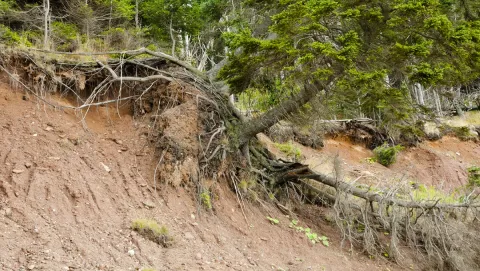Be prepared for landslides, mudslides too

When most people think about ground movement, they probably think of an earthquake, especially here in California. However, the ground can move without a quake.
As part of an ongoing effort to educate residents in emergency preparedness, the City of Mission Viejo is offering detailed information through the Emergency Survival Program (ESP). This guide features monthly topics, historical information and what you can do now to prepare. December's focus is on landslides and mudslides.
It's essential that residents living on steep hillsides and in canyons are prepared for landslides. Slow-moving landslides can cause significant property damage. Mudslides, however, are much more dangerous, since they can easily exceed speeds of 10 miles per hour and often flow at rates of more than 20 mph.
You can help reduce your risk of death, injury and property losses from landslides, mudslides and other ground failure by taking specific steps.
Before the Landslide/Mudslide:
You can reduce the potential impacts of land movement by doing the following:
- Assume that burn areas and canyon, hillside, mountain and other steep areas are more likely to have landslides and mudslides.
- Limit the height of plants near buildings to 18 inches.
- Use plants and bushes that are less likely to burn and keep them watered. This not only helps with landslides/mudslides but is also helpful for fire safety.
- Water landscape to promote early growth.
- Eliminate litter and dead and dry vegetation.
- Inspect slopes for increases in cracks, holes and other changes
- Build away from steep slopes.
- Consult with a soil engineer or an engineering geologist to minimize the potential impacts of landslides.
When it Rains:
Monitor the amount of rain during intense storms. More than three to four inches of rain per day, or 1/2-inch per hour, have been known to trigger mudslides.
Look for geological changes near your home:
- New springs
- Bulging slopes
Implement protection measures when necessary:
- Anticipate runoff and place sandbags in areas as needed
- Board up windows and doors
- Prepare to evacuate if requested to do so.
For more in-depth information on this month's topic and other preparedness information, visit the City's emergency preparedness page.
